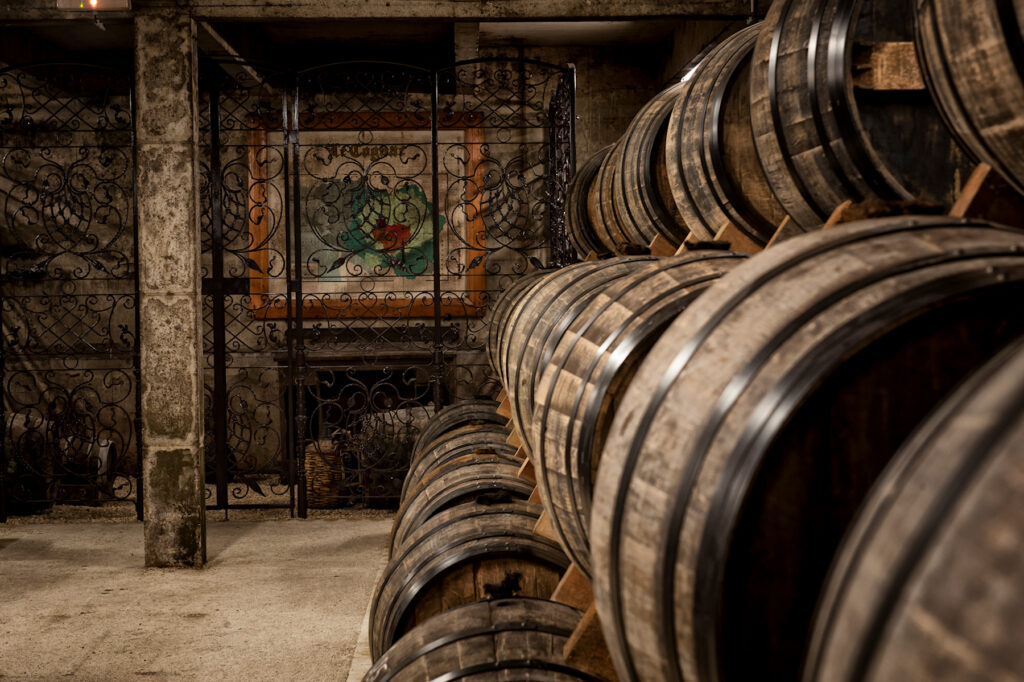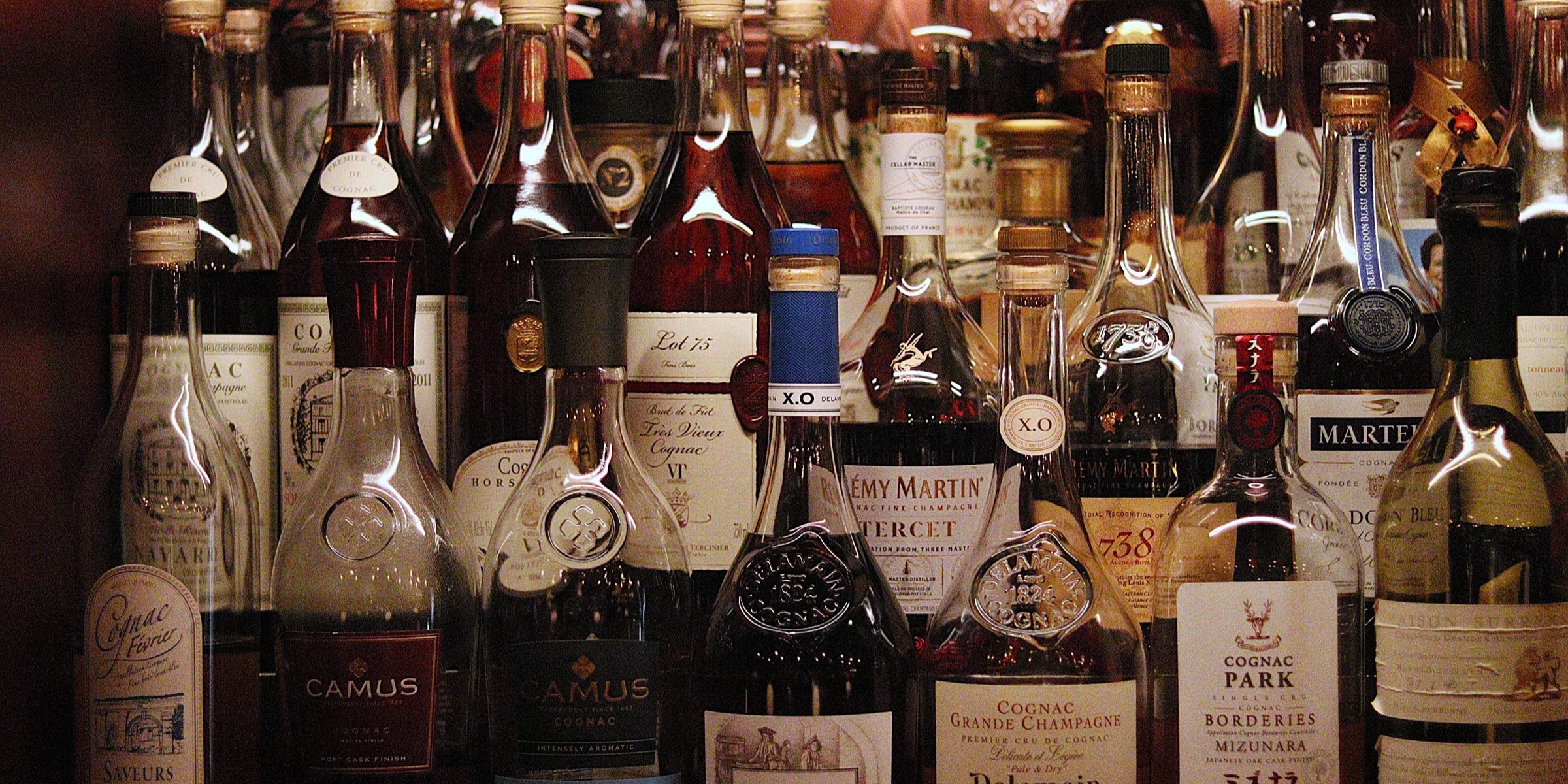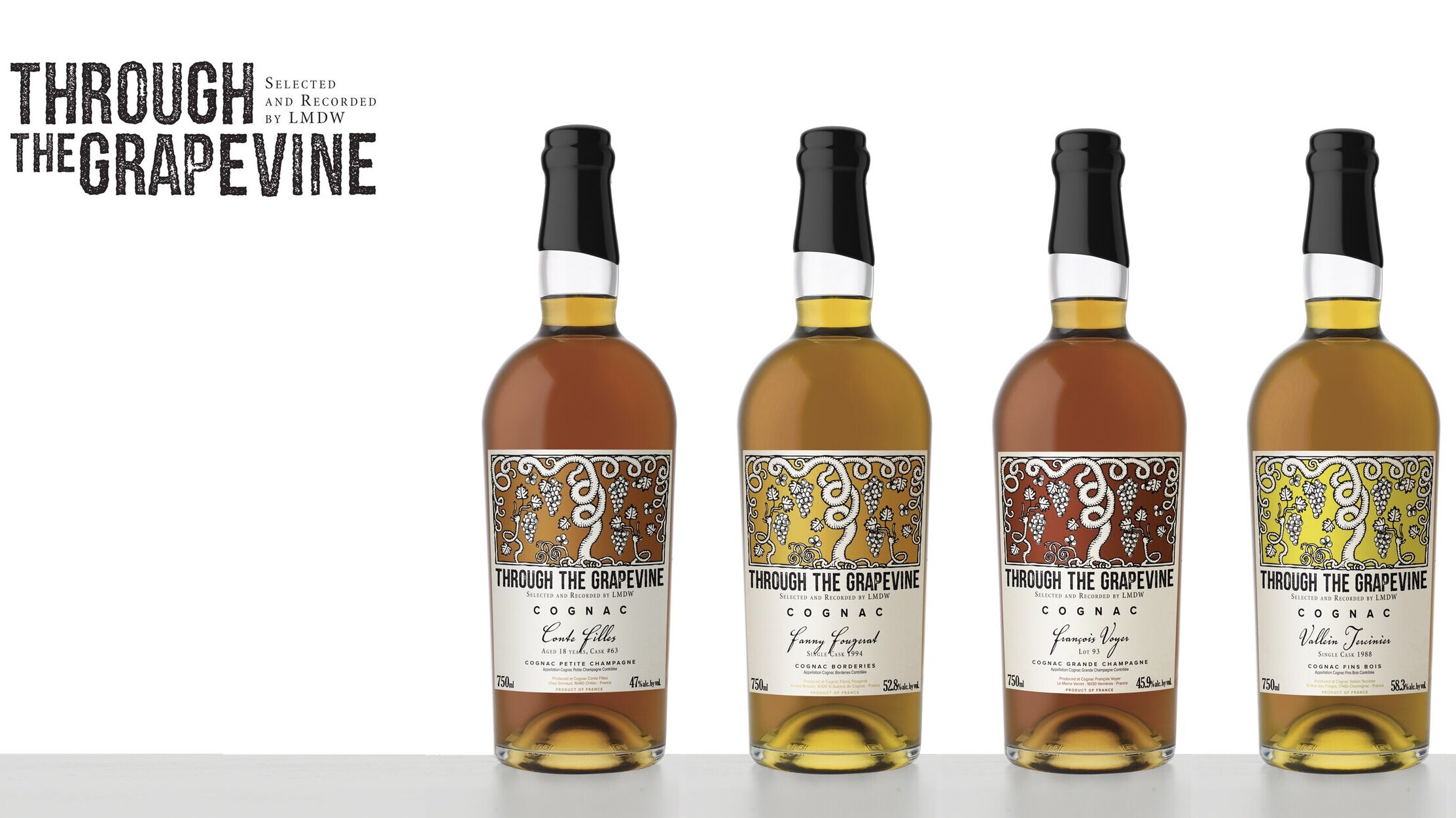It’s funny how first impressions really stick with you. I can still remember every brand of Cognac we had on the back bar at my first bar job. There was Hennessy, Courvoisier, Rémy Martin, Pierre Ferrand, and a few other smaller brands like Cognac Park. I’m sure we are all somewhat familiar with those first four houses. It’s possible, though, that Park might very well be a new name for you. I certainly knew nothing about them at the time, and yet I was always curious. It had a simple, classic bottle design with a straightforward label. Nothing flashy.
A good friend of mine worked for a distributor at the time and called me up one day. “Hey, I’ve got a rep coming in to town tomorrow from Cognac Park. Do you want to meet for a quick tasting?” I had some free time in my schedule, so of course I said yes. I trusted that he knew the kinds of things I wanted to taste/learn about. That was when I met Anaïs Brisson. Her knowledge and passion for the brand was, and still is, impressive. Since then, I have enjoyed many expressions from Cognac Park and continue to support them.
Anaïs is a native of Cognac. Her mother has worked for the BNIC in some capacity since she was 19 years old. Her father is a Bouilleur de Cru and tends to their vineyards in Grande and Petite Champagne. He also distills their own wine and even ages it himself to sell to several different houses. Anaïs received her Master of Wine and Spirits degree while attending school in Bordeaux. Part of the requirements for graduating was to do an internship. Luckily, Anaïs had a family friend, Jérôme Tessendier, one of the owners of Tessendier & Fils, which Cognac Park is a part of. They needed someone to help in the US market. So, she moved to California in 2012 and has been here ever since. Now residing in New York City, Anaïs is the US Operations Manager for Cognac Park.
• • • • •

Cognac Reverie: Cognac Park is actually a relatively new name in the spirits world, but the parent company, Tessendier & Fils, has roots in Cognac since the late 1800’s. How did Cognac Park come about?
Anaïs Brisson: Cognac Park is the premier brand from Distillerie Tessendier, which is a Cognac house that was established in 1880. Its founder, Gaston Tessendier, started out as a winemaker and later began distilling eaux-de-vie. The brand Park was created in the early 1990’s when Jérôme and Lilian, fourth generation of the Tessendier family, collaborated with a Scotsman, named Dominic Park, who fell in love with the Cognac region and had a dream of creating a brand in his name. Following a decade working in the London wine trade, Dominic Park decided to move to France and create a new Cognac house. It was Park and the Tessendier brothers who came together to develop the Cognac Park line and ultimately brought it to market.
CR: Do you know what the original idea was when Dominic Park came to the Tessendier brothers to ask about collaborating on a new brand? Was Cognac Park meant to grow organically the way it did?
AB: Dominic Park’s original idea was to find a reliable partner and a Master Blender to transform his idea which he had of a Cognac brand into a reality. Park wanted to create a pure and elegant Cognac with an intense focus on terroir that spoke to all people and have it at an affordable price, presented in simple packaging. When the Tessendier family took over ownership of the brand in 2008, in addition to being the producer since the brand’s inception, their goal was to expand the distribution that Dominic Park already started in key markets. The brand has grown greatly in the last 30 years, especially its notoriety, but still remains a small house compared to the big four brands which dominate the international market.
CR: What do you feel is the biggest difference with the final product now versus its conception in the early 1990’s?

AB: We have kept the exact same idea since our product was conceived; to have a complex and delicate flavor profile, but now also giving a clear vision of how and where it is made. The biggest change isn’t the product itself, but access to information.
I remember when I moved to the United States in 2012, the only thing I really got were these very basic sell sheets. But I started to get a lot of questions about things like which cru was in the blend and what was the age of our products. So, I started to ask the same questions to our Master Blender to obtain as many details as possible on each of our products. I wanted to go above what the people asking me questions would expect. I would ask things like how many new barrels, old barrels, is it a light toast, medium toast? All of these things I wanted to have the right answers to.
Before, Master Blenders were basically just working by themselves, they were more isolated. Today, they have to open themselves to the consumers, the ambassadors; explaining how they are producing their Cognac from the grape to the bottle. That is something that helps set us apart from some other brands. They don’t go into much detail. It was easy for me because my manager is the owner of the company. All I had to do was just call him and say that I needed more details. I’d have the answers the next day. That’s something that a lot of larger brands can’t do.
Besides that, the only thing that has really changed about the brand is the range of products. When Park was first created, it was only composed of four Cognacs; a VS, a VSOP, a Vieille Fine Champagne and a Grande Champagne Premier Cru. Since then, we’ve added several products and now have a range of more than ten expressions, including our Park Borderies Single Vineyard, Park Fins Bois Single Cru Organic, and Park Extra Grande Champagne, as well as our line of Park Borderies Mizunara. Plus, there are additional limited productions including our Chai Single Cask releases and some vintages.
CR: The Park Borderies Mizunara you mentioned got a lot of people excited, myself included. Whose idea was it and what was the thinking behind it?
AB: The project started in 2017 when our German ambassador reached out to Jérôme looking for a Japanese whiskey finished in Cognac barrels for his home market. Jérôme started to taste a lot of Japanese whiskies to understand the product better. He realized that there could be something really unique about a Cognac finished in Japanese Mizunara oak. It had never been done before. So, through his network, he got in touch with a cooperage in Japan. After acquiring his first two new, lightly charred Mizunara oak casks from the cooperage, several single cru batches were tested. The Borderies, coming from our own vineyard, stood out with the Mizunara finish. The first production was put in the Mizunara casks in May 2017 and launched at Prowein, an international exhibition in Germany, in March 2018. The Cognac is four years old and then finished for six months in the Japanese oak.

CR: And now you even have a few other Mizunara expressions and a special release coming out soon, right?
AB: Yes. The 10 year old Borderies Mizunara was released two years ago in Europe and is, of course, a 10 year old Cognac, but then finished for nine months in the Mizunara oak. And now we are releasing two new expressions which will be allocated to just a few states in the US because of the limited production. The 12 years old Borderies Mizunara, which is an extension of the 10 year old with two additional years in French oak barrels, is then finished for nine months in Mizunara oaks. 1,200 bottles are only available for this first production.
The other release is a single barrel Borderies Mizunara from 2004. The eau-de-vie was distilled in 2004 and aged 15 years in French oak barrels. At the end of its initial aging in 2019, the blend then finished for six months in the new Japanese Mizunara oak. That one is only 660 bottles, as it’s just one single barrel. Both of these are single cru releases, produced fully from vineyard to bottle by the Tessendier family at their estate, Domaine du Buisson in Borderies. Also, something important is that all of the Mizunara releases, the whole range, don’t have any additives. No sugar, no caramel, nothing.
CR: There’s a big conversation in Cognac currently about the woods used for barrel aging. I know the regulations from the BNIC say it must be oak. Do you think they should open it up to have more options?
AB: I think that we should continue to innovate in the finishing of different oaks such as Mizunara, Bourbon, Sauternes cask, etc., but still have the first years of aging in French oak. It’s important to keep a structure, or boundary, on what a Cognac is supposed to taste like. Finishing a Cognac in another wood should be an aromatic supplement to the Cognac. For example, our Mizunara oak barrels bring more vanilla and spicy notes to the finish without adulterating the product.

Photo by Sunita Martini
CR: The Tessendier family has a distillery in Jarnac. Does that mean you handle all the distillation yourselves, or are you also buying eaux-de-vie?
AB: We do all the distilling ourselves, but do buy some wine. The distillery in Jarnac is composed of six Charentais alembic stills. The wines that are used in the distillation of Cognac Park come from four crus within the Cognac region. We use Grande Champagne, Petite Champagne, Borderies and Fins Bois. Each year, the Tessendier family distills its Cognac from the wine produced on its own estate in Borderies, but also buys wine from a few winemakers. The relationships we have with these growers have spanned several generations. Cognac Park distills all the eaux-de-vie on site in every blend that we do. Also, something interesting is that our distillery is the only one still active in the town of Jarnac.
CR: I’ve got a bottle of the Chai No 8 Borderies and I really love it. Most Cognac’s are blends, so a single barrel expression is a unique way to showcase the spirit. What was the story about how this all started?
AB: Well, we actually sold our first single barrel to the US Market in 2013 to the Brandy Library in New York City. That was the first request we ever got from a consumer to buy an entire barrel from us. We were all very surprised! It just wasn’t something that had ever been done before, buying a whole cask unblended. Each barrel holds 350-400L, so that’s about 460-530 750mL bottles.
After that, we decided to create two limited products, but offer them to a few of our partner distributors. So, the Chai No. 8 that you have was not exclusive to one customer. It was a smaller production of two different expressions, one from Borderies and one from Petite Champagne, that was bought by a distributor to sell in their market. Those ended up only being available in a few select states where our importer at the time operated.
We’ve got 14 different cellars, but Chai No. 8 is the one where we keep most of our older, unique barrels. Most everything in that cellar is 15-20 years old and above. So, those two barrels were the only ones released to that distributor in the state of Washington. After that we decided to do it by request only. We do maybe seven to eight barrels a year now to key customers.

where the oldest barrels from Cognac Park rest
CR: The final question has to be the most difficult. Do you personally have a favorite expression from Cognac Park?
AB: That’s a very hard question. I probably have two favorite expressions from our core line. The Cognac Park VS Carte Blanche for one. It’s young and lively; it has enough complexity to shine through in a cocktail, but it’s also great on its own. For me, it is the best value for the money in the VS category.
My second favorite expression would have to be our Cognac Park Borderies Single Vineyard. It’s a very true expression of terroir, but not like every other single cru Borderies. Our Borderies is Cognac that’s 10 years minimum, up to 15 years old, coming exclusively from our own vineyard. Technically it belongs in the XO category. This cognac speaks to everyone; single malt drinkers, sommeliers, or just Cognac enthusiasts looking for something different. They all will enjoy it. It’s such an elegant and floral Cognac. You can drink it before a meal on ice, which is my favorite way, or after dinner on its own without spending more than $80/bottle.





